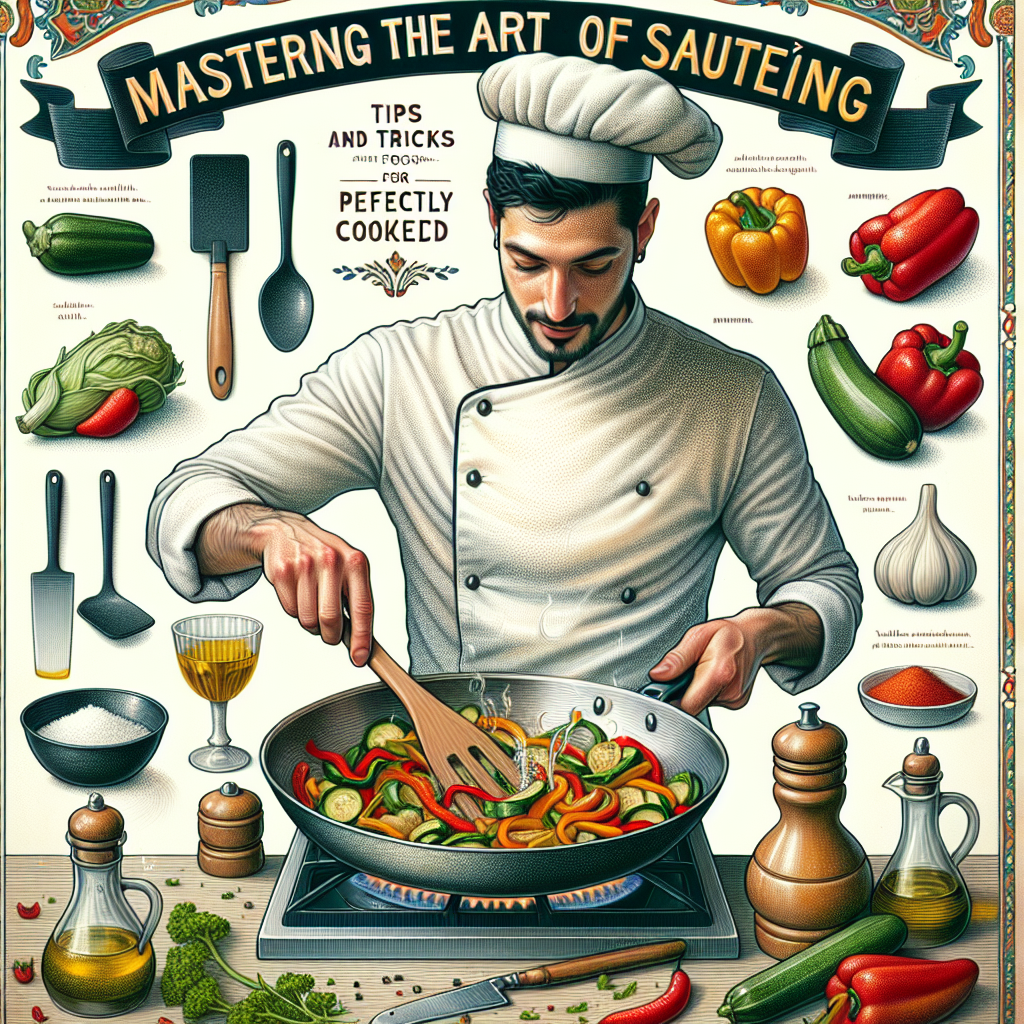[ad_1]
Sautéing is a cooking technique that involves cooking food quickly in a small amount of fat over high heat. It is a versatile and efficient way to cook a wide variety of ingredients, from vegetables to meats to seafood. Mastering the art of sautéing can help you achieve perfectly cooked dishes that are full of flavor and texture. In this article, we will explore some tips and tricks for sautéing like a pro, as well as answer some frequently asked questions about this cooking method.
Tips for Perfectly Sautéed Dishes:
1. Preheat your pan: Before you start sautéing, make sure your pan is hot. A hot pan will create a nice sear on your ingredients and help them cook quickly and evenly.
2. Use the right oil: Choose an oil with a high smoke point for sautéing, such as canola, grapeseed, or peanut oil. Avoid using olive oil, as it has a lower smoke point and can burn easily at high temperatures.
3. Cut ingredients evenly: To ensure that your ingredients cook at the same rate, cut them into even-sized pieces. This will help them cook evenly and prevent some pieces from being overcooked while others are still undercooked.
4. Don’t overcrowd the pan: To achieve a nice sear on your ingredients, make sure not to overcrowd the pan. Cook in batches if necessary, and leave some space between the pieces of food to allow for even cooking.
5. Keep ingredients moving: While sautéing, keep the ingredients moving in the pan by tossing or stirring them regularly. This will help them cook evenly and prevent them from sticking or burning.
6. Season as you go: Season your ingredients as you cook them, rather than waiting until the end. This will help the flavors penetrate the food more deeply and result in a more flavorful dish.
7. Finish with a liquid: To add extra flavor and moisture to your sautéed dish, consider deglazing the pan with a splash of wine, broth, or citrus juice. This will help loosen any flavorful browned bits stuck to the bottom of the pan and create a delicious sauce.
8. Garnish with fresh herbs: To add a pop of freshness and color to your sautéed dish, consider garnishing it with chopped fresh herbs, such as parsley, cilantro, or basil. This will add another layer of flavor and make your dish look more appetizing.
Tricks for Mastering Sautéing:
1. The flip technique: Instead of stirring or tossing your ingredients with a utensil, try using the flip technique. With a quick flick of the wrist, you can flip the ingredients in the pan, allowing them to cook evenly and creating a nice sear on all sides.
2. The steam technique: If you want to cook your ingredients more gently, try adding a splash of water or broth to the pan and covering it with a lid. The steam will help cook the ingredients more evenly and create a tender, moist texture.
3. The perfect sear: To achieve a perfect sear on your ingredients, make sure not to move them around too much in the pan. Let them cook undisturbed for a few minutes to develop a nice crust before flipping or stirring them.
4. The art of deglazing: After sautéing your ingredients, don’t forget to deglaze the pan to create a delicious sauce. Add a splash of liquid to the hot pan and use a wooden spoon to scrape up any flavorful browned bits stuck to the bottom.
5. The final touch: To add a finishing touch to your sautéed dish, consider topping it with a sprinkle of grated cheese, a drizzle of flavored oil, or a dollop of creamy sauce. This will add extra flavor and make your dish look more enticing.
FAQs about Sautéing:
Q: Can I use butter for sautéing?
A: While butter can add a rich flavor to sautéed dishes, it has a lower smoke point than oils and can burn easily at high temperatures. If you do want to use butter, consider using a combination of butter and oil to prevent burning.
Q: How do I know when my ingredients are done sautéing?
A: To check if your ingredients are done sautéing, use a fork or knife to pierce them. They should feel tender and easily pierced when they are cooked through.
Q: Can I sauté frozen ingredients?
A: It is best to thaw frozen ingredients before sautéing them, as they will release excess moisture during cooking and may not cook evenly.
Q: How do I prevent my ingredients from sticking to the pan?
A: To prevent your ingredients from sticking to the pan, make sure it is hot before adding the food, use enough oil to coat the bottom of the pan, and keep the food moving to prevent it from burning.
Q: Can I sauté without oil?
A: While you can technically sauté without oil, the process will not be as efficient and the results may not be as flavorful. Using a small amount of oil will help ensure even cooking and add richness to the dish.
In conclusion, mastering the art of sautéing can help you create perfectly cooked dishes that are full of flavor and texture. By following these tips and tricks, as well as experimenting with different techniques, you can elevate your sautéing skills to the next level. So grab your pan, heat up some oil, and start sautéing your way to delicious meals!
[ad_2]

Leave a Reply